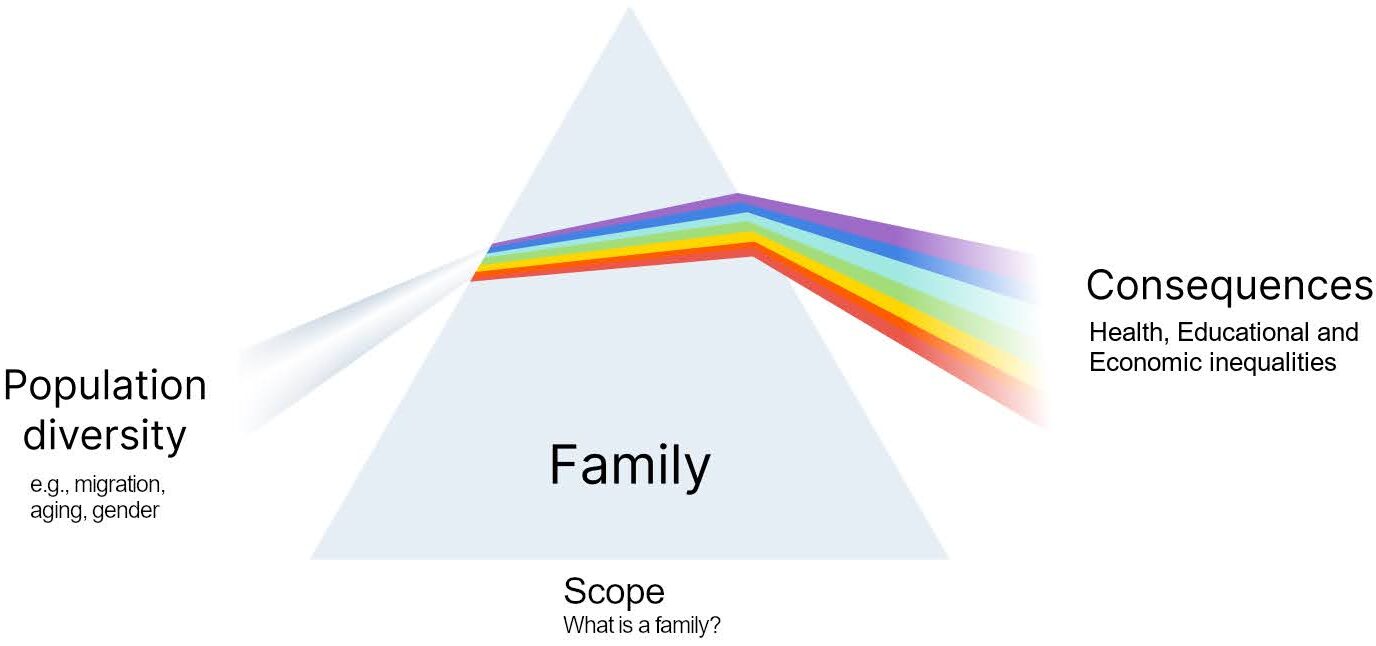Objective 1 aims to advance the understanding and conceptualisation of family and family diversity through in-depth reviews of scientific literature, legal frameworks and official statistics, co-creative interaction with a “citizen panel”, and quantitative survey experiments.
Major goals of Objective 1 are to map the diversity of family definitions, how the latter vary according to age, gender, education, migration background, LGBTQ identity, or religious orientations, and how they shape both perceptions and actual behaviour with respect to, for example, care obligations and social support more broadly.
Research Questions:
- How is family membership defined in family law, official statistics, and by individuals?
- How does family diversity shape people’s perceptions of relationships and expectations relating to mutual responsibility and support?
Family as a Prism
At the ECPD, we understand family as a prism for population diversity. Just as a prism reveals the spectrum of colors within light, studying population diversity through the lens of ‘family’ unveils a range of intersecting inequalities in health and wellbeing, economic status, and education that, understanding a prism also as a system, form highly predictable trajectories for health outcomes within and across generations.

What is Family Diversity?
It is the smallest unit in a society: the family. However, defining the boundaries of this unit can be a subjective task defined by one’s cultural or religious roots, sexual orientation, gender identity, life experience, medical history, and stage in life course. In addition, events like marriage, divorce, pregnancy, care-taking, death, and experiences of migration or collective trauma may further diversify the notion of ‘family’ in today’s crisis-troubled societies.
What does Family Diversity Mean for our Aging Societies?
For aging societies, this diversification could mean two things: either a shift in attitudes, norms, values, and behaviors within the family reduces or increases chances for multi-morbidity in old age. This is not only relevant for access to appropriate care infrastructures within and beyond the family unit, but also in terms of breaking trans-generational bounds of social, educational, and health inequalities that in different but connected ways influence pathways to healthy aging.
